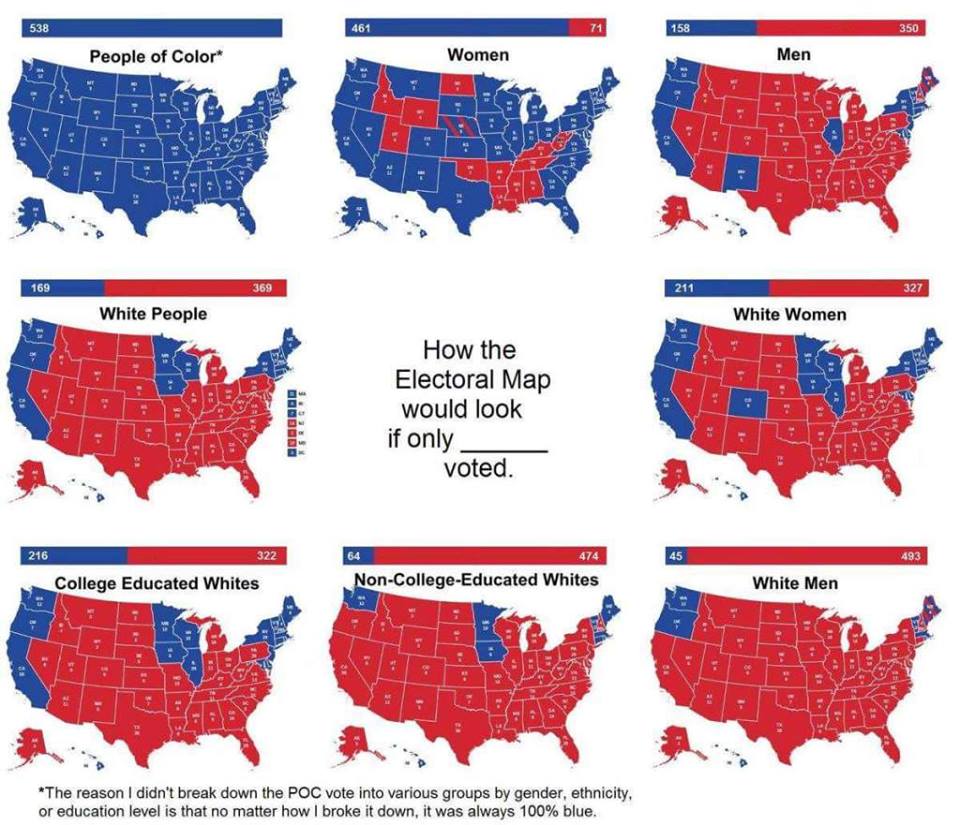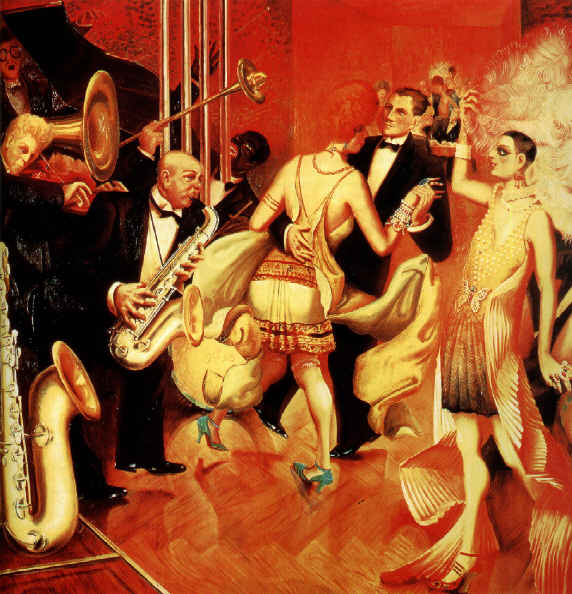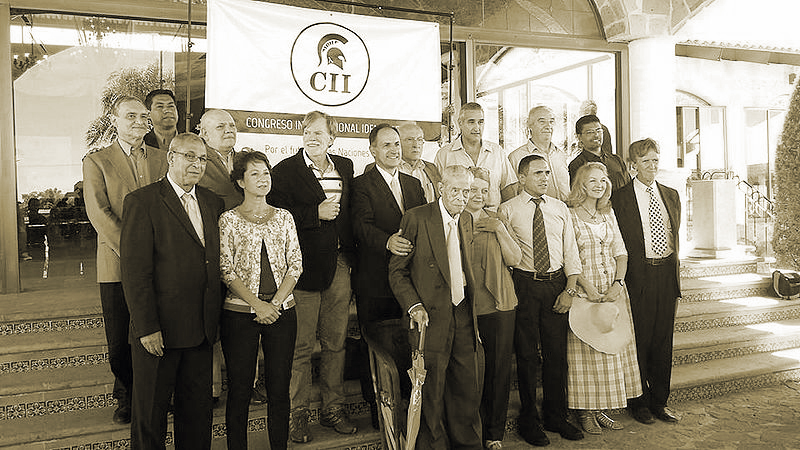Or:
Second thoughts about my “parting word”
I was serious last July when I wrote that I would not add more posts to this page until the financial accident happens. But another sort of accident happened to me that ruined my plans (see below), and instead of making a living overseas I find myself writing again.
In the July message I also said that I would “be busy explaining my minority report.” Well, I have started that autobiographical book in my native language. Its first translated pages are precisely the ones that appear below:
_______________________________________
To the memory of Percy
_______________________________________
 On August 4, 2014 I arrived to London in the hope of moving to a small town in the United Kingdom in order to save my life once Mexico City catches fire after the looming collapse of the dollar.
On August 4, 2014 I arrived to London in the hope of moving to a small town in the United Kingdom in order to save my life once Mexico City catches fire after the looming collapse of the dollar.
One of the smartest commenters on my blog, whom I will call “the Brazilian,” had promised, through his contacts, forged work permit so I could look for a job in England. Throughout the two years I interacted with him in the blog and then thru personal communications, this guy reiterated that he wanted to help me to move there, and when in early 2014 he indeed moved to England I thought his plans were sincere.
The man is the result of a mixture between the races of his homeland, Brazil. He himself confessed publicly that his ancestors were Iberians, blacks and mestizos. Thus in order he did not feel self-conscious with me, I told him that I was not properly white.
Later in this chapter I will talk about some “Creole nationalists”—Mexicans that show off their Iberian roots and claim to have no drop of Indian blood—with whom I interacted in Mexico. The Brazilian’s intelligence had so impressed me that I told these Creole nationalists that my Brazilian, “mulatto friend has an IQ of 140.” Moreover, in my intimate soliloquies I said, more than once, that the level of penetration of the Brazilian on important issues to understand the darkest hour in Occident amazed me. I even told to myself that an “upward quantum leap” was crystal-clear when comparing the Brazilian to the vast majority of Aryan commenters visiting my site. No one like him had captured perfectly the disaster that represented Christianity for the white race, to the extent that—like me—the Brazilian considered it a more serious problem that the Jewish problem itself. Even his derogatory remarks about the philosophers sounded to my ears far above the intellectual masturbation we read in some sophisticated pro-white sites in the internet.
The Brazilian’s intellectual acumen, along with my huge need to escape Mexico, made my defenses down and I trusted him to the extent of deferring to his judgment my first steps to immigrate. I refer not only to the steps to obtain forged documents but also to roommate concerns. (London is so expensive that almost everyone shares their departments and the poorest even their rooms.) Although, as we shall see later in Extermination, thirty-two years before I had a horrible experience in London at a time when I also wanted to escape from Mexico, this time I thought that with such smart colleague our plans could not fail. The Brazilian even offered to pick me up at Heathrow Airport outside London; by telephone he informed me that he would not go to work the Monday I arrived to pick me up.
I thanked him and my flight arrived on time. After exiting from the immigration line, where obviously I hid the British woman who interrogated me that the purpose of my trip was to immigrate, I was surprised that the Brazilian was not there. I waited about twenty minutes at Terminal 4, the specific spot of international arrivals I had mentioned to the colleague, but no sign of him. After half hour he hadn’t come. Nor forty or fifty minutes after arriving at the terminal… I had virtually not slept due to my inability to sleep sitting on the plane and I badly needed to leave the soulless airport lounge and go to the hotel I had booked and even paid from Mexico. But the Brazilian did not appear. With the heavy suitcase I carried—suitcase to emigrate, not for tourism—I could not even move at ease in the terminal. I made a change in coins from a fiver to call the Brazilian’s mobile phone. What was my surprise that he wasn’t at the airport; just on his way, and he claimed he was “about to arrive.” I stopped worrying. But time continued to pass, and more than an hour-and-a-half after my arrival at the agreed terminal, he did not appear. I was hesitant to make extra phone calls because the airport’s phone had swallowed one or two of my pound coins but tried calling. This second time his tone was less friendly, “I’m almost there!” It must have been about two to three hours after the plane landed that the Brazilian finally appeared, without apologizing for the delay.
I wish to stop now and don’t recount the misadventure of that day because it makes me mad that I trusted someone whom I had never met in the real world, but I shall keep writing…
Having been so much delayed would be only the first lack of consideration by the Brazilian to a man more than twenty years his elder, who had arrived sleepless from a transatlantic voyage. After greeting each other, the Brazilian convinced me that the taxi would be very expensive and that we better take the subway to my hotel. Once in the tube, as it is called the narrow subway in London, we had to transship over more than once the various lines en route to the hotel, always carrying my heavy suitcase up awful stairs during the transfers. When we got off from a train among the London crowd for one of these transfers, the Brazilian asked me to wait because he wanted to buy something in the store just across the tracks. He climbed the stairs, walked into the shop, came out and smiled at me before… getting out into the street.
I was completely flabbergasted! If such a thing happened to me in my right mind, not in the confused state I was, I would have acted differently. But I was at the mercy of a bloke that—allegedly—would solve my migration problems. He was the only contact I knew in London for a (crooked) work permit. As he had already been delayed at the airport without a good reason or having apologized, had I been in my right mind when he went off the street I would have told him to get lost; fled by taxi to my hotel, and would have sought a more reliable contact the following days (say, through Spanish-speaking restaurants). But without sleep as I was, with great anxiety I remained on the tube station watching the largest racial melting pot of Europe (nowadays London has white minority).
The Brazilian should have taken about thirty-five minutes to arrive, or more, since he left and only then I realized that he had not found what he wanted at the front shop; that’s why he looked it out on the street. Hours later I discovered it were beers what the miscreant had bought, who had cared a damn that his fellow blogger (the Brazilian used to maintain a blog about “racial realism” in Portuguese) remained stranded with his heavy suitcase wondering what the hell had happened.
As I said, it makes me mad to tell this because I did not react as I should. The fact that I did not possess work permit and that the Brazilian had the handle for the grill not only for it, but to get me affordable accommodation—according to him he already had reserved one—played a psychological role in my indecision to make a clean break after the second or third discourtesy. Anyway, when he came laughing and said, “What did you think: that this crazy Brazilian had abandoned you?” I hid my feelings and continued the underground journey to the hotel.
It was during another transfer, now closer to the hotel and where we had to go outside to take another train (I think it was the street where he showed me the tallest building in Europe) that the Brazilian asked me something. He said that instead of going to my hotel, why not accompanying him to the slum hostel where he was living these days. They only charged £60 per week and although his roommates were black—that is, three blacks slept in a single room, beside the Brazilian—, it was only for a week while the better place he had reserved for us would be vacating. The Brazilian had a small back suitcase containing his laptop. He dared not leave it in the hostel with such hosts and carried it every time he went out.
Go figure my dear readers… All of my travel strategy had been based on a bloke that, now I realized, was on the verge of homelessness as he had to carry his belongings in the street for fear of loosing them in a “hostel” without lockers. Had I not been so obfuscated by the turn of events I would have stopped dry the adventure that very instant. But cognitively I was not well. In fact, I was completely alienated. True: I had prepared with extreme meticulousness everything left in Mexico—my library, my manuscripts in ring-binders and envelopes sealed against moisture (I thought I wouldn’t be back in years), the taking care of my pet and even a big farewell party for all believed I would leave for good—, but about my stay in England I had deferred all planning to “the mulatto of 140 of IQ.”
What a mistake. It was not until my return to Mexico, when I told the details of my misadventure to my old friend Paulina, that I noticed things that a man usually cannot see. Pau listened carefully and explained that men tend to admire intelligence at the expense of the other facet of the human psyche: empathy. I knew that in the white nationalist movement there were people with terrible character flaws. But the fact that the Brazilian seemed a hybrid between mestizo and mulatto was no reason to distrust him, as he believes in the “fourteen words” to the extent of having promised not to leave offspring. (Remember the first lesson to the Hitler Youth of Faith and Action by Helmut Stellrecht: “But if your blood has traits that will make your children unhappy and burdens to the state, then you have the heroic duty to be the last.”)
Unfortunately, character flaws can be hidden over the internet. And as in Mexico I only had considered the intellectual aspect of this bloke—a “hemiplegia” of mine, so to speak instead of having delved into the two facets of the person—, in a state of complete cognitive alienation to what was happening I agreed to his idea to abort the journey to my hotel and go to his hostel.
I would lie if I lay the blame at the Brazilian. Now that I’m out of the UK I find it obvious that the planning of my trip was grotesque, to say the least. “The drowning will grab at straws,” and the urgency of leaving a Neanderthalesque Mexico and survive the dollar collapse was such that I put aside from my consciousness basic matters I should have contemplated at my age, before venturing on another continent.
The journey to the hostel was not underground but from the outside, traveling in one of those red double-decker Routemaster buses so showy in London. And still there came the miscreant character of he whom I had placed my most cherished hopes. Throughout the journey in the underground and on the outside of the biggest city in Europe—a crossing that, due to change of plans, had already lasted more than two hours after leaving the airport—the Brazilian had never been solicitous in helping me with my heavy suitcase. Now, in the red double-decker bus, he swiftly climbed to the second floor and asked me repeatedly to go upstairs with him! It was then for the first time, that I showed some self-respect by refusing to come up with my heavy suitcase. During that second-long journey—remember that by aborting the way to the hotel we now were going to a very different address—we still had to make another transfer, but this time from bus to bus. We descended into a densely populated and very noisy area of London; streets swarmed with lots of blacks. To my surprise, the Brazilian told me to wait because he was going to find a toilet.
Lo and behold I was once again alone among human swarms with my heavy suitcase and no sleep! (Later, when I learned that the first time he left he had gone to buy beer, I connected the dots and realized that it was urgent for him to urinate the ingested alcohol.) In that hideous swarthy-filled street, and carrying something less than £2,000 in cash along with my credit cards, a black approached me. I didn’t understand a word. Scared and carrying the heavy suitcase I entered a grocery store but the attendants were not white either. My anxiety was very obvious until the Brazilian reappeared and we boarded the final bus that would take us to our destination.
Unlike the noisy subway, on the red bus it was possible to talk. At last we initiated conversation on topics that fascinate me. I told him that I had seen some mixed couples in London and was greatly surprised that there were so many blacks. He replied that it was a punishment to the English for having waged war against Germany, and added that Nazi Germany was by far the noblest creature that European history had produced. Then he said he did not understand how Americans like Matt Parrott insist on mixing the unmixable: Christianity with white nationalism.
It was not until we reached his quarters that I received the biggest shock of the trip. It’s true that in 1982 I had spent a night in London in a spacious room of a Youth Hostel; a room with many beds. But back then they were all European Aryans; I, the only foreigner. I was twenty-four and, coming from Mexico, was amazed at how good looking some of those English were (in the country where I was born almost all seemed Neanderthals to me). But now I was in 2014, and the all-encompassing social engineering of the British elites in recent decades, that is, replacement of the native race by imported race, had been a success. The Brazilian’s room was not spacious as the hostel I had slept decades ago. It was of regular size with the most miserable niggers you might think of. In fact, in no way it resembled a hostel but one of those trash-people rooms subsidized by charities for the homeless in large metropolis. But they were not homeless: they were blacks surviving, I suppose, from the same type of underemployment of the Brazilian.
I barely saw the spectacle and wanted to run away. On the street the Brazilian insisted that I should pay the £60 for the week. It was already night and he claimed he was tired and that we should think things over the next day. I didn’t know what to do. I had to cancel the hotel reservation so that it was not charged to my American Express, but there were no public telephones in the neighborhood. I tried to get information in a grocery store that opened at night, but they were immigrants who hardly knew English and were unaware of the dynamics of the big city. Not even the Brazilian could tell me what was, in England, the telephone equivalent to 911 so that, through his cell phone, I could make a call. The Brazilian kept insisting me to pay the £60, as the “hostel” never receives one-night payment, only a full week; and said I should forget my worries until the next day. (Take into account that with those £60 I could have spent a single night in a modest hotel, even after losing my reservation.) Still arguing in the street, the Brazilian, speaking in a serious tone, argued that he was tired; ignoring that it was me who had not slept the night before, and insisted to forget the matter of seeking hotel or making emergency phone calls.
As there was no one to help me, not even a taxi to get on in those streets, and as I was worried that in that colored neighborhood I could be assaulted and my money taken away (for my heavy suitcase I was an obvious target), I agreed. I reentered the “hostel,” paid the administrator of the slum the £60 he demanded, and walked into to the room of blacks and the mulatto Brazilian.
But I could not sleep… Although I had not slept the night before I was in a state of extreme anxiety.
I went out to the hostel’s terrace and finally I saw a white man. He was also an immigrant. He didn’t have fluent English and told me he was from Romania. As it had happened to me decades ago in the same city, as I newly arrived from Neanderthalesque lands I was pleasantly surprised by the looks of the blond Romanian. I spoke with him in the fresh night but not for long. He was not very smart and I also felt a little cold in the outdoors terrace. (I had left the plane with my jacket, shirt and dress pants but had not changed my clothes; one of the blacks that tried to sleep in the dirty room, where my cloths were, had warned me not turn the light on.) Apparently the Brazilian also failed to reconcile sleep and after sighting me in the terrace he went to the kitchen to talk at length with a muscular black returning from the gym. The Brazilian informed me that to survive in such place—go figure, myself in formalwear with the downtrodden—, one had to learn to converse amiably with the dark-skinned. The long conversation of the Brazilian with the huge black gave the lie to the claim that he was too tired to help me make an urgent phone-call.
I don’t remember the exact moment when the Brazilian told me that the police had arrested his contact—the very contact that was supposed to get me the papers. He did not say whether he had been arrested the day before or the day I arrived at Heathrow. But I doubt that, if the story is true, it was such a recent event. Chances are that the arrest had occurred long before—which means that the Brazilian had not warned me on time, when I was in Mexico. Had I been informed on time I would have aborted any plan to cross the Atlantic!
The events yelled at me that the trip had been in vain. By not having warned me in time of the arrest the Brazilian had committed a trick of confidence. However, even though that day the Brazilian confessed that he was desperately seeking a decent roommate, I failed to suspect that behind his convincing me to come to London a sinister motive was hiding. The crux of his confession was that his old roommate was a black homosexual whose conduct had caused the Brazilian to flee from there and move to the seedy hostel (where we were now).
I am ashamed to say that even with all this novel information I was slow to connect the dots that such insistence that I go London had not been motivated to help me, the word he used several times but to help himself in his problems with blacks. The underlying motivation of Brazilian seemed to be: “Unlike this nigger, blogger César, who comes from an educated family and whose parents have three pianos at home and five servants, will be my personal savior.”
Such naiveté!: In Mexico I had only imagined a Brazilian full of honor, insofar he vehemently insisted he did not plan to reproduce even after finding a woman in England (remember the wise counsel of Helmut Stellrecht for non-whites). But in London he told me that even before his “racial awakening”—something unheard of in a man of color—he had come to the firm conclusion that he would not leave descendants in Brazil. It was not until I assimilated even more painful confessions than that of the “gay nigger”—for example, that the day prior to my arrival the Brazilian had been wandering at London’s downtown because he could not remember where he lived, and that he drank alcohol to cope with his pathetic life—that I began to glimpse who he really was.
The trip had been a fraud. My purpose had never been crossing the ocean to help a mulatoid fellow to find a roommate—but looking sanctuary for me in a small English village with no coloreds to survive the dollar collapse! He who so much boasted to know something of human psychology had been duped like a child…! Nothing had I suspected of the motives of Brazilian: trying to use me to solve his problem and, therefore, the understandable lack to timely notify me about the “arrest.”
But back to my sleepless night.
My mattress had no sheets. I had no choice but to put my white skin in contact with a mattress that must have suffered a thousand sweats from blacks. Even in such conditions I tried to sleep with the four darks of the room. My anxieties and a disagreeable negress snoring inches from me on the top bunk—the pseudohostel was so abhorrent that not only races mixed, but the very sexes too—didn’t let me sleep…
But with the dawn I regained my senses. In the morning, with several guests already waking up on the terrace, including some I had not seen the previous evening, the Brazilian insisted I opened a bank account and said that another of his contacts worked in a bank (by law, tourists cannot open accounts in the UK). Perhaps that employee even knew, the Brazilian told me, another person to obtain work permit.
But I had lost confidence in him. The second night of consecutive sleeplessness I had talked to another night bird, Stuart, who lived there in another room and used to talk to the Romanian during the evenings on the terrace. His accent was not British. Stuart was born in Scotland and raised in New Orleans. As the Brazilian, Stuart had been so badly beaten by life that he had fallen to the pseudohostel. We spoke of my racial ideas and this young man conceded that in New Orleans blacks had behaved very poorly during hurricane Katrina. He was not bothered, though somewhat surprised, about my overtly racist worldview and I asked him what was the whitest city in Scotland. He said that Perth and his hometown, Dundee. He added that the beautiful town of Perth was ideal for retirees (i.e., for people like me had I arrived with the proper funds to buy a modest house).
I made my decision. That morning I was not going to endure a single minute of a “hostel” which did not even have showers for bathing. The blacks woke up and put their filthy music we all heard over the terrace. I told the Brazilian that I would go to Scotland. He was surprised but, by seeing my resolution, walked along with me to the outskirts of the metro station. We said goodbye and never met again.
I still struggled that day to reach Perth. It was not the Victoria Station that the Brazilian had suggested but the famous King’s Cross the one which would take me to the far north: the very one where they had filmed the movies of the magical station in Harry Potter. My flight had been so hurried that already going on my train to Scotland I had to ask one of the uniformed train attendants if Perth was large enough to house hotels. By fleeing multiracial London and the nightmarish underworld of the Brazilian I hadn’t had time to make the most basic inquiries! (the hostel didn’t have Wifi access). Although nearly all uniformed workers in train stations were black, I approached an Anglo-Saxon woman who informed me that there were hotels there. However, still dying of tiredness I was unable to sleep sitting up and had to wait six more hours to reach my destination.
When I arrived to Perth the tourist information center was closed, but the taxi driver of the terminal, a typical Scot, was extremely helpful in taking me to the cheapest places he knew. We went to Dunkeld Road not far from the station, and the Scot awaited me several times while I knocked the doors of various guesthouses. As it was midsummer the signs were saying “No vacancy” but in one of the houses, Connie, the Irish woman who received guests in Clark Kimberly Guest House, admitted me gladly. Having no reservation I had to rent an expensive room with double bed.
But it didn’t matter. That night I slept placidly after so long. At last I encountered myself in the hands of the white man…
 I have said that the white nationalist myopia bothers me. They have awakened to the colored and the Jewish question and that is great. But they are tone deaf about what I have been saying of the Mediterraneans. For example, they ignore that in Latin America the Iberian whites dislike so much the Nordish whites at the north of the Río Grande that in our media there is not even a single white who has defended Donald Trump—not even one, not even in the written press or intellectual magazines! [1]
I have said that the white nationalist myopia bothers me. They have awakened to the colored and the Jewish question and that is great. But they are tone deaf about what I have been saying of the Mediterraneans. For example, they ignore that in Latin America the Iberian whites dislike so much the Nordish whites at the north of the Río Grande that in our media there is not even a single white who has defended Donald Trump—not even one, not even in the written press or intellectual magazines! [1]







